Resources
Welcome to our library of useful resources. You can subscribe to this page and we will email you as new resources are added.
You Tube
Watch our YouTube channel for a variety of presentations, technical talks and how-to videos.
Te Reo SI
The Measurement Standards Laboratory has prepared a translation of the BIPM’s Concise Summary of the SI in te reo Māori. We are making this resource available to support the teaching and learning of science in te reo Māori.
Rediscovering pre-European Maori Measurement Systems
A Measurement Standards Laboratory research project focuses principally on the indigenous metrology of New Zealand by taking a historical approach to pre-European contact Māori measurement practices, artefacts and methods. Read more about our findings here.
NZ Standard Time
MSL maintains New Zealand's time standard. You can find more information about the Time Standard here.
Technical Guides
Technical Guides are published by the Measurement Standards Laboratory to provide assistance with measurement techniques and support best practice.
General
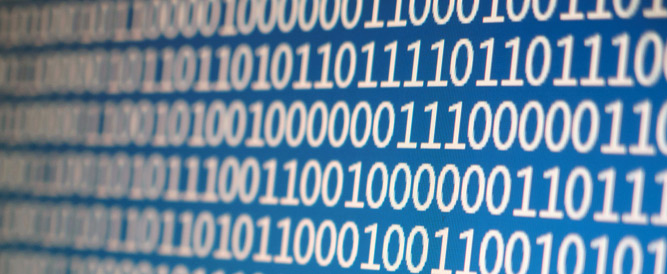
The MD5 checksum for an MSL report
Technical Guide 43
MSL can provide electronic calibration, test and measurement reports, as an alternative to paper documents. These documents are in Portable Document Format (PDF) form.
Electrical and RF
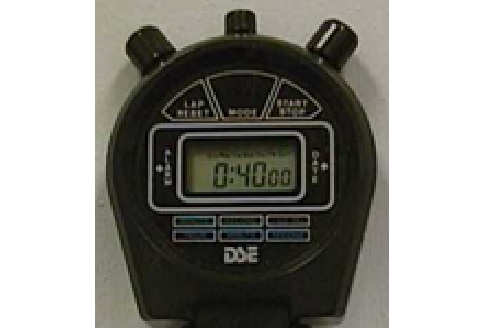
Calibration of Stopwatches
Technical Guide 8
How to obtain a traceable calibration of a stopwatch using the MSL talking clock. Includes details on the use of the clock and the uncertainty to be expected.
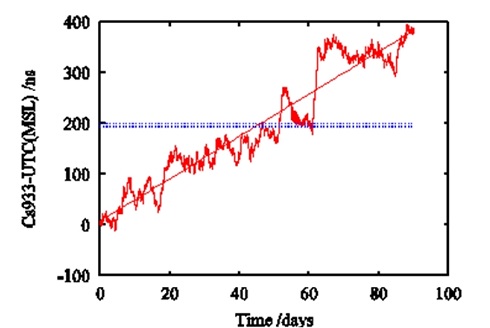
Uncertainty Calculations for Remote Clocks
Technical Guide 9
This guide describes the uncertainty calibrations made for the measurements reported in the MSL time and frequency bulletins and recommends a method for users of the bulletins to calculate the uncertainty in the frequency of their remote oscillator.
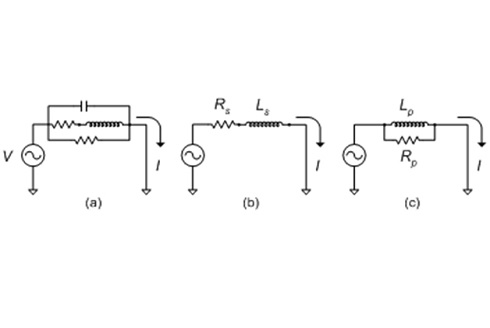
Impedance (RLC) Standards
Technical Guide 27
The ac measurement of resistors, inductors and capacitors (R, L and C) requires a clear understanding of exactly what is being measured. This guide aims to help owners of impedance standards make the best use of their equipment. Part I explains the information provided in a typical calibration certificate for an impedance standard and Part II gives general advice on using the impedance standards.
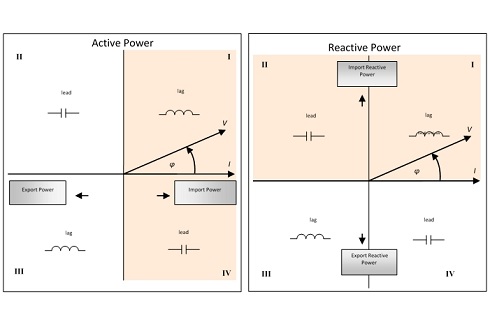
Phase and Sign Conventions for Energy Meters
Technical Guide 28
The relationship between voltage and current in a system being metered can be expressed in several ways, e.g., by a power factor, a phase angle, or by describing the load as inductive or capacitive. This is straightforward when the system being metered is a net consumer of power and the phase angle is between +90° and −90°. It is less clear when the system is generating power and the phase angle exceeds 90°.
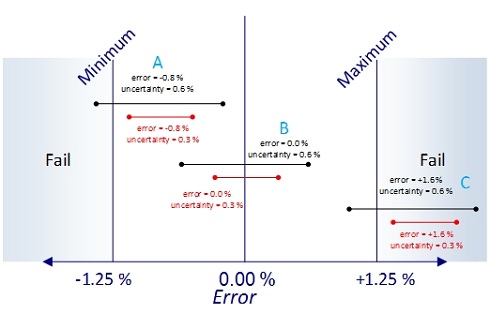
Electricity Metering: Advice for Class B Approved Test Houses
Technical Guide 33
The Electricity Authority has specified the requirements for electricity metering in Part 10 of the Electricity Industry Participation Code. Class B Approved Test Houses have many responsibilities placed on them by the code to assure the trustworthiness of the metering that they install and maintain. This guide offers practical advice on how to manage measurement uncertainty from design to installation without needing to carry out specialist in-depth uncertainty calculations.

Electricity Metering: Current Transformers
Technical Guide 37
This technical guide offers advice on calibrating current transformers (CTs) used for metering electricity. The New Zealand requirements for electricity revenue metering are given in Part 10 of the Electricity Industry Participation Code (The Code)This technical guide offers advice on calibrating current transformers (CTs) used for metering electricity. The New Zealand requirements for electricity revenue metering are given in Part 10 of the Electricity Industry Participation Code (The Code).
Photometry and Radiometry
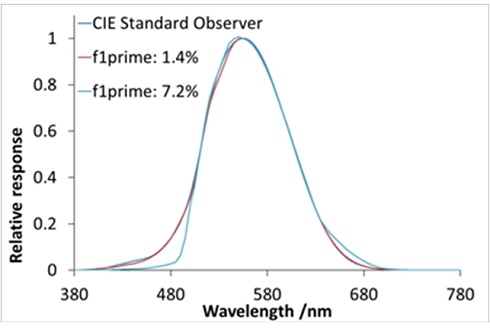
Spectral Mismatch of Illuminance Meters
Technical Guide 34
Illuminance meters are commonly used in industry to ensure lighting is at an appropriate level to demonstrate compliance for purposes such as health and safety and inspection. They can be purchased relatively cheaply but how good an instrument are they? This technical guide explains one of the most critical components of illuminance meter characteristics, the spectral mismatch, and the likely magnitude of error this effect can lead to in common commercial light meters.

Reference Materials for the Calibration of UV/visible Light Spectrophotometers
Technical Guide 38
This guide provides information about reference materials that can be used when calibrating or checking the performance of a UV/visible light spectrophotometer. The known absorbance of reference materials at particular wavelengths can be used to validate the scale of absorbance (photometric accuracy), the wavelength accuracy of a spectrometer and identify stray light problems.
Mass and Pressure
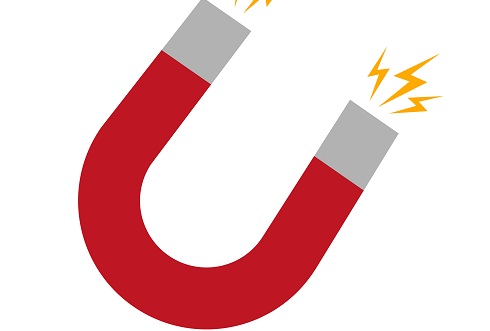
Magnetic Effects in Weighing
Technical Guide 6
An introduction to magnetic effects in weighing and how to avoid them. Includes a description of MSL’s facility for measuring the magnetic properties of weights. Suitable for anyone using or calibrating balances, or calibrating weights.

Calibrating Standard Weights
Technical Guide 7
How to calibrate standard weights to a best accuracy of 1 part per million. Suitable for weight calibration laboratories and for anyone using or calibrating balances.
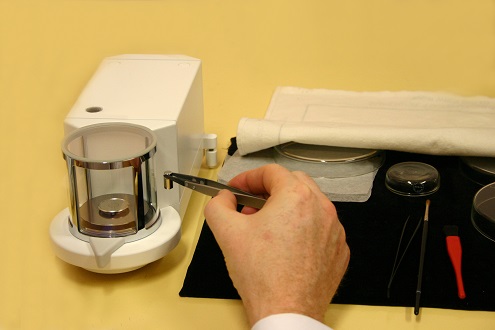
Assuring the Quality of Weighing Results
Technical Guide 12
This technical guide covers quality assurance aspects of the use of electronic balances and other weighing devices, including calibration, in-service checks and acceptance criteria, control charts, and check weights.
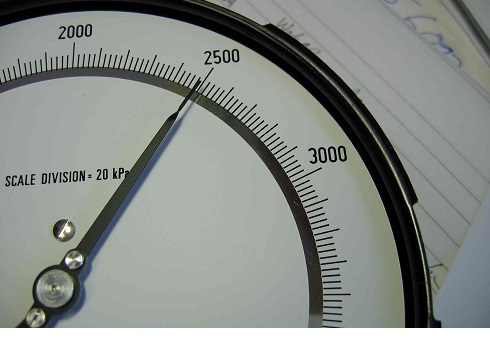
Pressure Gauge Calibration
Technical Guide 13
This technical guide outlines a method to calibrate a pressure gauge and calculate the uncertainty of the gauge corrections. The method is suitable for gauge calibration laboratories accredited to ISO 17205 and can be applied to any pressure gauge or transducer calibration.
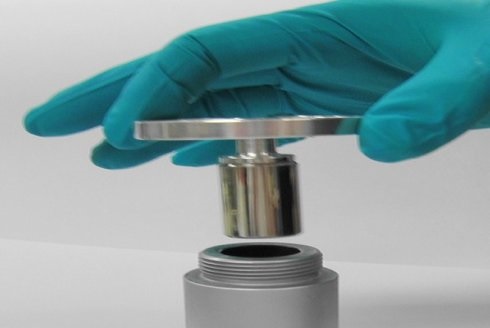
Care and Use of a Deadweight Tester
Technical Guide 16
Deadweight testers, also known as pressure balances or piston gauges, are stable instruments, with long recalibration intervals, that can reliably generate pressures with a small uncertainty. To assure this stable behaviour between calibrations the deadweight tester has to be operated correctly and looked after well.
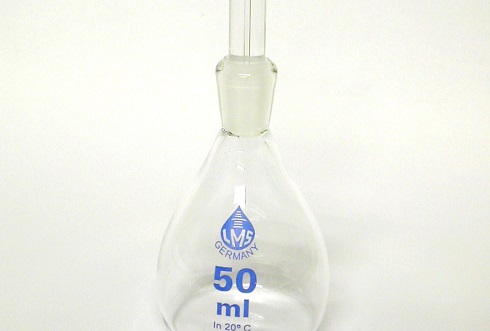
Measuring Volume by Weighing Water
Technical Guide 17
This guide describes a method for measuring the volume of a vessel by weighing the water it can contain (or deliver). The method is suitable for vessels such as burettes and pipettes, and can also be applied to the calibration of water flowmeters. The guide covers the necessary calculations, measurement uncertainties with an emphasis on repeatability, and some practical details.
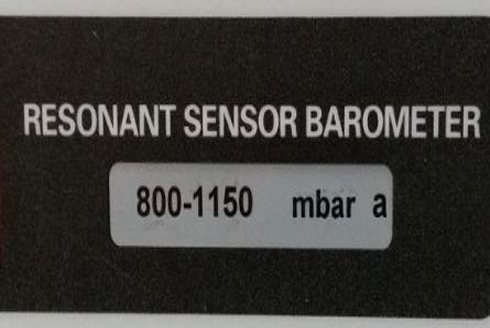
Measuring Atmospheric Pressure with a Barometer
Technical Guide 19
This guide explains how to use a digital barometer to measure atmospheric pressure in a laboratory or industrial setting. It starts with a brief discussion of the atmosphere and then talks about barometers, their stability and calibration requirements, along with how to work out the uncertainty of an air pressure measurement.
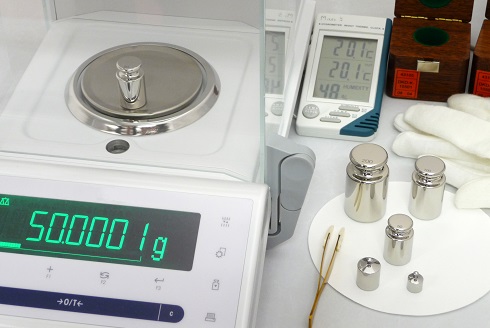
Calibrating Balances
Technical Guide 25
A method for calibrating balances is described in this technical guide. It includes pre-calibration steps, the measurements to be recorded and their analysis, the evaluation of measurement uncertainties and the reporting of results. This method, which is taught in the MSL Balances and Weighing workshop, is focused on electronic top-loading balances but applies to most modern weighing devices.
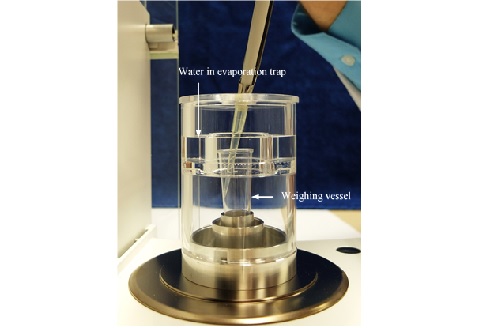
Calibrating Piston Pipettes
Technical Guide 30
This technical guide describes a method for calibrating both fixed volume and variable volume piston pipettes with volumes from below 1 µL to above 10 mL. The guide covers the necessary equipment, the method and how it relates to ISO Standards for piston pipettes, the necessary calculations and the measurement uncertainties. It also addresses the method uncertainty associated with calibrating pipettes to ISO 8655.
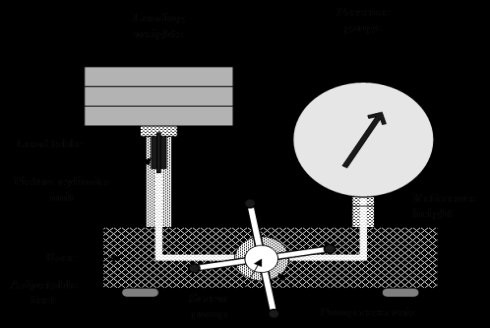
Calculating Deadweight Tester Pressures
Technical Guide 36
This technical guide describes how to calculate pressures generated by a deadweight tester, or pressure balance, for use in calibrating pressure-measuring instruments. It is applicable to hydraulic and pneumatic deadweight testers that generate gauge pressure (including negative gauge pressure), where a relative uncertainty in pressure of 0.003 % (30 ppm) or greater is required.
Temperature and Humidity
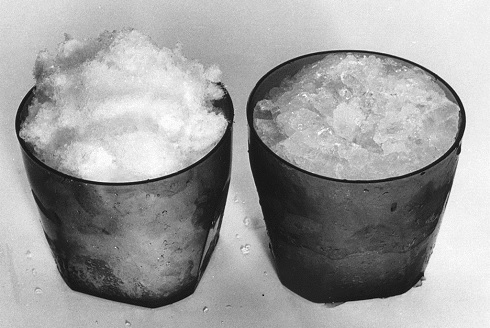
The Ice Point
Technical Guide 1
How to make a simple temperature reference at 0 °C accurate to 0.01 °C. Suitable for anyone using liquid-in-glass thermometers, thermocouples, thermistors or platinum resistance thermometers.
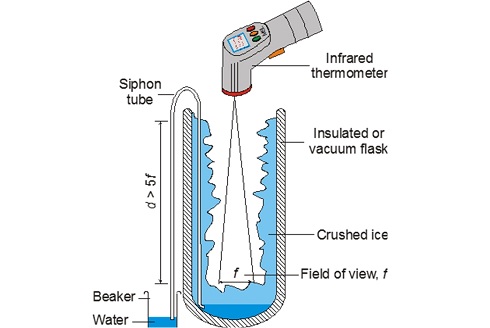
Infrared Thermometry Ice Point
Technical Guide 2
A simple procedure for checking low-temperature radiation thermometers at 0 ºC.
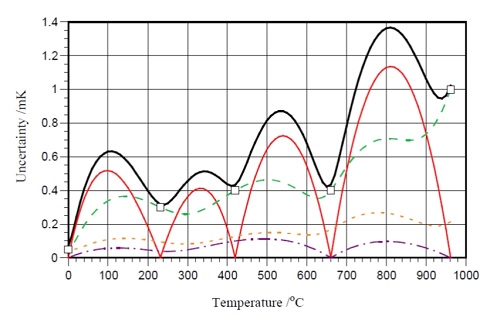
Uncertainties in the Realisation of the SPRT Subranges of ITS-90
Technical Guide 3
The MSL technical guide TG3: "Propagating uncertainties in the SPRT subranges of ITS-90" has been superceded by the more helpful document Uncertainties in the realisation of the SPRT subranges of ITS-90 published by the BIPM's Consultative Committee for Thermometry (BIPM, Interntional Bureau of Weights and Measures, www.bipm.org ). The guide explains all of the sources of uncertainty in the use and calibration of standard platinum resistance thermometers (SPRT), and gives the expressions for total uncertainty for a wide range of measurement senarios.
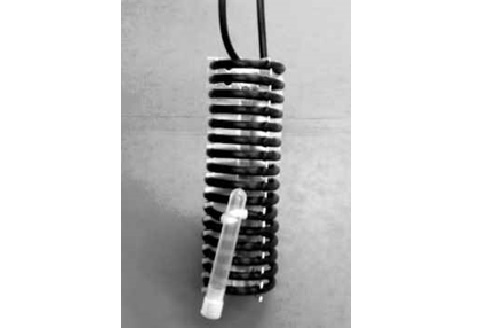
Icepoint Humidity Generator
Technical Guide 4
How to construct a simple single point humidity generator using MSL Technical Guide 1 (The Ice Point) as the saturator temperature controller. Useful for routine spot checks of dew point meters and relative humidity hygrometers.
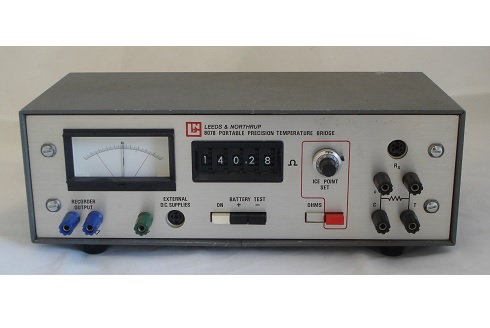
Using the Leeds & Northrup 8078 Bridge
Technical Guide 5
For those who own a Leeds & Northrup 8078 resistance bridge, some tips on how to reduce the uncertainty in the readings.
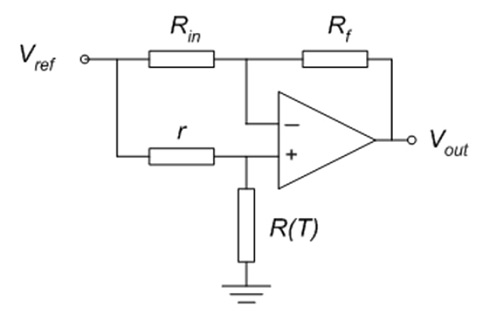
Simple,Narrow-Band, Thermistor Thermometer
Technical Guide 10
This technical guide describes a simple circuit that provides a voltage proportional to temperature difference. The circuit is linear within 0.1 ºC over ranges of up to ±10 ºC, capable of accuracies of a few millikelvin, and will resolve temperature differences below 50 K.
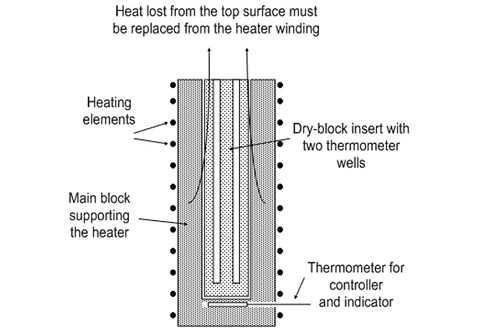
Thermometer Immersion and Dry-Block Calibrators
Technical Guide 11
This technical guide provides users with a simple method for assessing the quality of thermometer immersion in dry-block calibrators. Although the test method describes the testing of dry-block calibrators, it can also be used to assess the quality of immersion in any furnace, calibration bath, oven, etc.
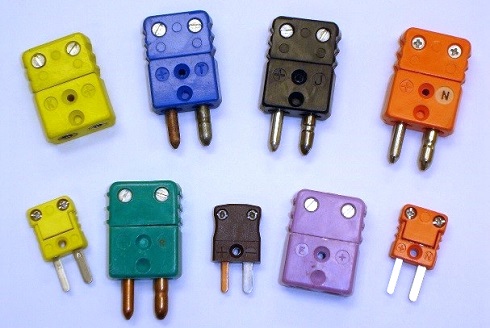
Making Sense of Thermocouples
Technical Guide 14
Thermocouples are the most widely used of all temperature sensors. The simplicity of two wires connected to a meter has an obvious appeal. However, when high confidence is required, thermocouples can be a liability. Unlike other temperature sensors, thermocouple faults are often not obvious and calibration of thermocouples can be a waste of time.
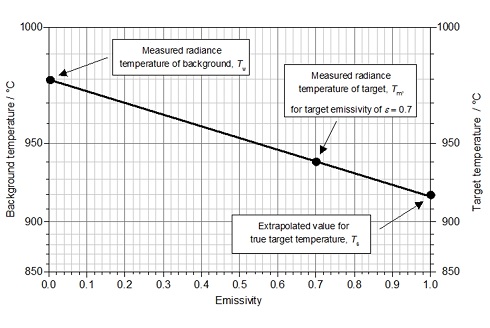
Correcting Radiation Thermometers for Reflection Errors
Technical Guide 15
Reflection errors occur in most practical applications of radiation thermometry. This guide describes the development of a simple graphical method (called a nomogram) for calculating reflection corrections, and gives instruction on its use.
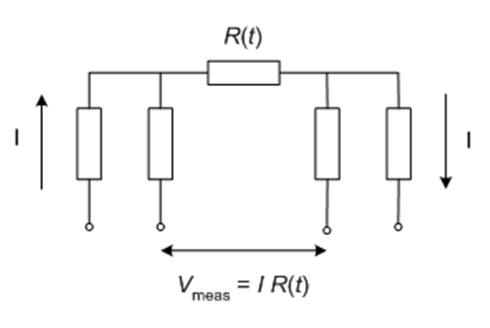
Resistance Measurement for Thermometry
Technical Guide 18
Platinum resistance thermometers (PRT), also known as resistance-temperature detectors (RTD) and PT100 sensors (100 Ω platinum sensors), are a workhorse of both industrial and laboratory temperature measurement.
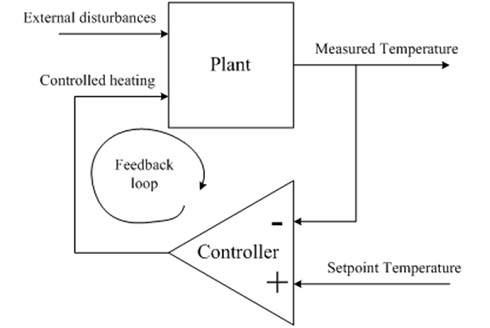
Introduction to Temperature Control
Technical Guide 20
One of the most common reasons for measuring temperature is to control it. This applies not only to industrial processes but also to many laboratory tests and experiments. To the uninitiated, control systems seem to exhibit confusing and sometimes peculiar behaviour. The purpose of this guide is to help users understand the behaviour and to obtain the best performance from temperature controllers.
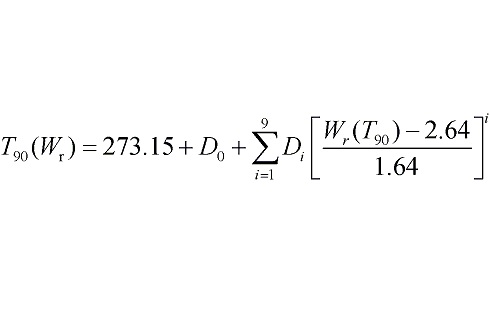
Using SPRT Calibration Certificates
Technical Guide 21
Standard platinum resistance thermometer (SPRT) calibration certificates typically report measurements as resistance ratios with respect to the SPRT resistance at the triple point of water and give the uncertainties in these measured resistance ratios. This guide explains how to use the certificate with the SPRT to measure temperature, and how to calculate the uncertainty in the measured temperature caused by the calibration uncertainties.
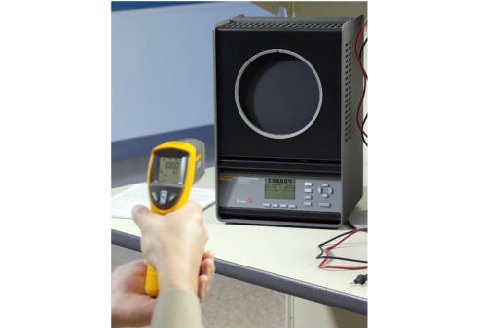
Calibration of Low-Temperature Infrared Thermometers
Technical Guide 22
The advent of low-cost handheld infrared thermometers, which make non-contact measurements in the range –50 °C to 500 °C, has led to a proliferation of the thermometers in the food, building, and low-temperature processing industries. However, these instruments are not as simple to use as they first appear due to systematic effects related to emissivity, reflections, and the temperature of the thermometer itself. This guide explains how to calibrate low-temperature infrared thermometers and gives methods for correcting for the systematic effects.

Calibration of Low-Temperature Infrared Thermometers
TG22 Spreadsheet Download
In addition to Technical Guide 22, you can download the excel spread sheet to assist with your calculations.

Using Industrial Platinum Resistance Thermometers for Laboratory Thermometry
Technical Guide 23
Industrial platinum resistance thermometers, also known as Pt100s or RTDs, are very widely used in industry where accuracies of 1 °C or better are required. With a little care, they can also be used to obtain accuracies of 0.01 °C; this guide explains how.
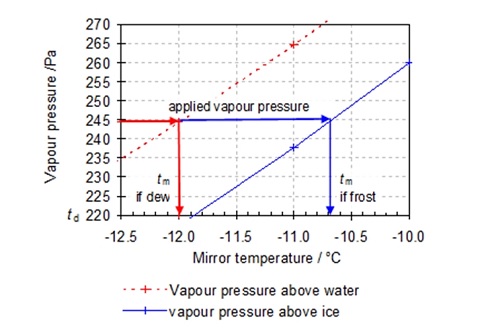
Dew-Frost Error and the Chilled-Mirror Hygrometer
Technical Guide 24
Chilled mirror hygrometers provide accurate measurements of humidity as long as the state of the condensate (frost or dew) is known. Large errors are common when the mirror temperature lies between 0 °C and ‑25 °C, since the condensate can be frost or supercooled dew, or even a mixed state. This technical guide explains how to account for, and partially correct, the error in a chilled-mirror hygrometer measurement, when it is not possible to unambiguously identify the condensate.
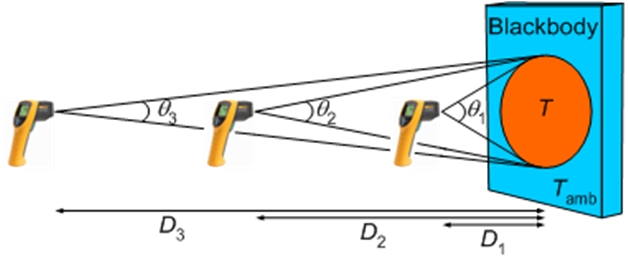
Size-of-Source Effect in Infrared Thermometers
Technical Guide 26
The accuracy of most handheld infrared thermometers is severely limited by a phenomenon known as the size-of-source effect (SSE), which arises from scattering and diffraction of radiation within the optical system of the device. The error caused by the SSE can be many times larger than the accuracy quoted in the device's specifications. This guide explains how a calibration laboratory can characterise the SSE and provide information on a calibration certificate to enable users to correct for the SSE and achieve the best accuracy in their measurements.
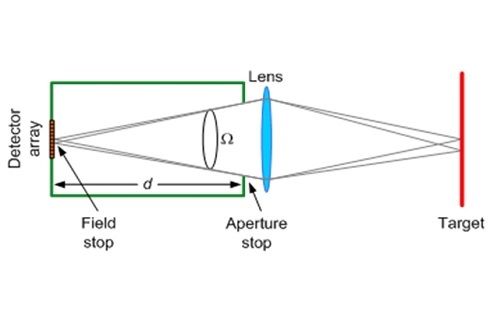
Focus effect in Thermal Imagers
Technical Guide 29
Thermal imagers are being increasingly used quantitatively to make absolute temperature measurements, and thus require calibration by an accredited laboratory. However, calibration of these instruments is complicated by the fact that, for some thermal imagers, the radiometric accuracy is not retained when the focusing lens is adjusted. This impacts on the user, as the temperature readings will only be accurate if the focus setting matches that used by the calibration laboratory. This technical guide describes the origin of this focus effect, and gives advice to the calibration laboratory on how to identify whether the problem exists and what steps to take to deal with it if it does.
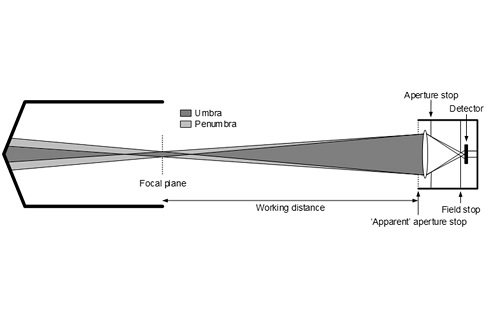
Emissivity of Blackbody Cavities
Technical Guide 35
Blackbodies are commonly used as a transfer medium for the calibration of radiation thermometers. While the emissivity of such cavities is generally close to 1, for high-accuracy calibrations it is important that the actual emissivity is known. This emissivity will depend on the geometry of the cavity, the emissivity of the material it is made from, and the field of view of the radiation thermometer viewing the cavity. Additionally, the emissivity will vary with any temperature non-uniformities that exist along the cavity length. Methods to calculate the cavity emissivity are highly mathematical and require sophisticated computer programs to implement them. This guide provides a brief overview on how to calculate cavity emissivity and is accompanied by a software application (Microsoft Windows compatible) that implements the method and illustrates the concepts graphically.

Emissivity of Blackbody Cavities - Software download
Technical Guide 35
In addition to the Technical Guide download providing a brief overview on how to calculate cavity emissivity, it is accompanied by a software application (Microsoft Windows compatible) that implements the method and illustrates the concepts graphically. Click Order Now to connect to our contact form and request the software for this TG.
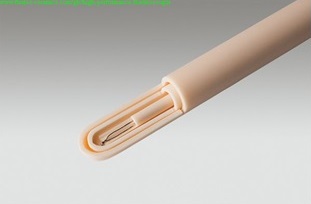
Making Sense of Thermocouples - Noble-Metal Thermocouples, Best Practice and Care
Technical Guide 39
This technical guide provides users of noble-metal thermocouples with the knowledge required to ensure both good accuracy and longevity of reference thermocouples. The guide focuses on alumina-sheathed bare-wire noble-metal thermocouples of Types B, R, and S. It describes how to prevent contamination, re-annealing, calibration intervals, and reversible causes of drift.
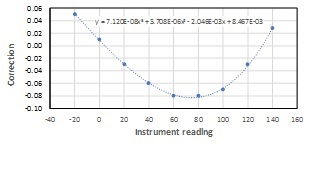
Interpolating Corrections from Calibration Certificates
Technical Guide 40
This technical guide describes two methods for calculating the values for corrections and uncertainties between entries reported in a calibration certificate, and gives advice on the required conditions for obtaining meaningful interpolated values.
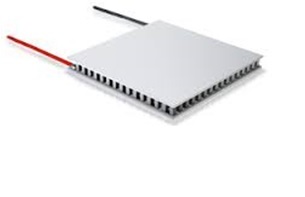
Using Peltier Devices for Temperature Control
Technical Guide 41
This technical guide describes an electrical-analogue model of Peltier devices as an aid for the design of small refrigeration and temperature control systems. The model is easily incorporated into spreadsheets, where the performance of a system under different operating conditions can be explored easily.
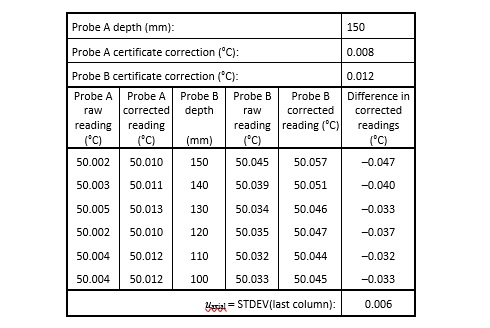
Calibration of Dry-Block Calibrators
Technical Guide 42
Dry-block calibrators are widely used in second-tier calibration laboratories and throughout industry to calibrate temperature measurement and control systems. The purpose of this technical guide is to provide users with a simple method for surveying a dry-block calibrator and assessing its accuracy as a calibration medium to be used with either an external reference thermometer or a calibrated indicator.

Shipping Triple Point of Water Cells
Technical Guide 44
This technical guide describes a simple inexpensive method of constructing a container that can be used to safely transport delicate triple-point-of-water cells.
Books
MSL staff have written technical books to assist with measurement practice. Currently available books are:
Book List
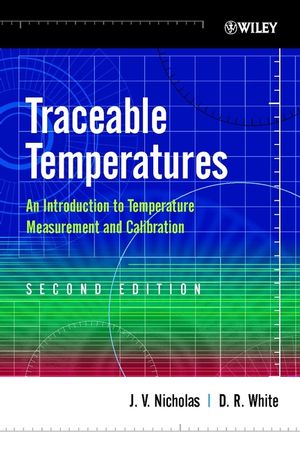
Traceable Temperatures: An Introduction to Temperature Measurement and Calibration (2nd Ed.)
Authors: J V Nicholas and D R White
This book is a little different to most other measurement texts; it explains what goes wrong with temperature measurements, how to recognise when something is wrong, and how to fix it. Sections include operating principles, sources of error, choosing and using instruments, and calibration methods for each type of thermometer. It also provides the background material on measurement, uncertainty, calibration, accreditation, and the international measurement system, to support the understanding of the instruments and their use in making traceable temperature measurements.

Radiation Thermometry: Fundamentals and Applications in the Petrochemical Industry
Author: Peter Saunders
This tutorial text provides an introduction to the subject of radiation thermometry, focusing on sources of measurement error and giving advice on methods for minimizing or eliminating these errors. Topics covered include: blackbody radiation, emissivity, reflection errors, and atmospheric absorption and emission; commonly used radiation thermometer types; uncertainty calculation; and procedures for in-house calibration of radiation thermometers. Included is a chapter containing detailed measurement examples for a variety of furnace types and operating conditions found in the methanol, ammonia, and refining industries.
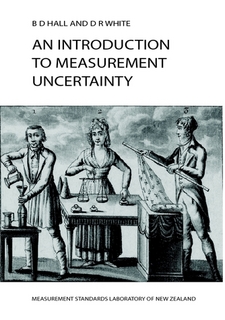
An Introduction to Measurement Uncertainty (print edition)
Authors: B D Hall and D R White
This introduction to measurement uncertainty is intended for metrology professionals working in calibration laboratories and metrology institutes, as well as students in tertiary-level science and engineering programmes. The subject matter is presented with an emphasis on developing models of the physical measurement process. The level of mathematics and statistics used is basic and is typically covered by high school studies.
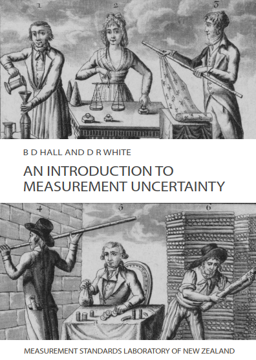
An Introduction to Measurement Uncertainty (digital edition)
Authors: B D Hall and D R White
This introduction to measurement uncertainty is intended for metrology professionals working in calibration laboratories and metrology institutes, as well as students in tertiary-level science and engineering programmes. The subject matter is presented with an emphasis on developing models of the physical measurement process. The level of mathematics and statistics used is basic and is typically covered by high school studies.
Software for Data Processing
The Measurement Standards Laboratory has developed several tools for data-processing that automatically propagate measurement uncertainty.
These software tools are based on the notion of an uncertain number, an abstract data-type that encapsulates a value and an associated uncertainty. Uncertain-number data processing simultaneously evaluates the value and an associated uncertainty.
Software
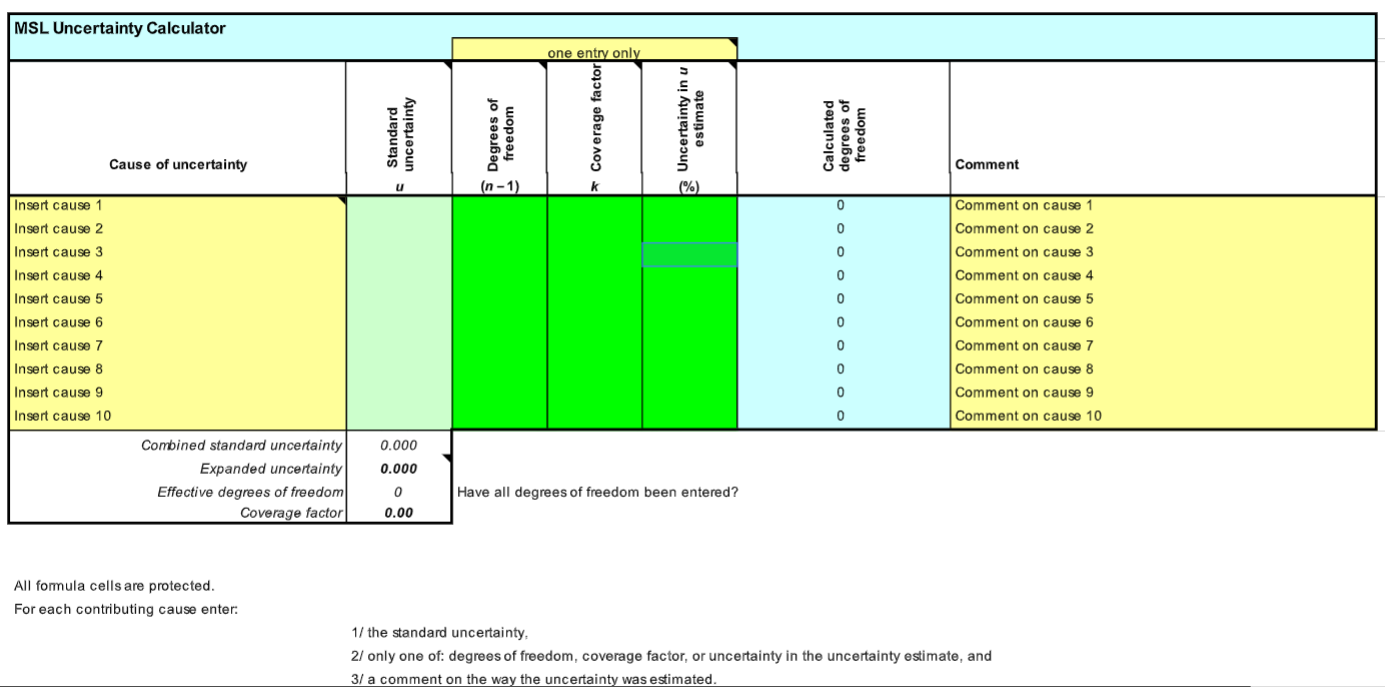
MSL Uncertainty Calculator
The MSL Uncertainty Calculator is an Excel spreadsheet that provides an uncertainty table suitable for summarising and propagating uncertainties. The total uncertainty is calculated together with the effective degrees of freedom and coverage factor. This tool is recommended when the equation for propagating uncertainty can easily be reduced to a sum of uncertainty terms in a common unit (e.g., all in volts or all in milliohms). The spreadsheet was updated in September 2022 so that it no longer uses VBA functions and is, therefore, safe to open.
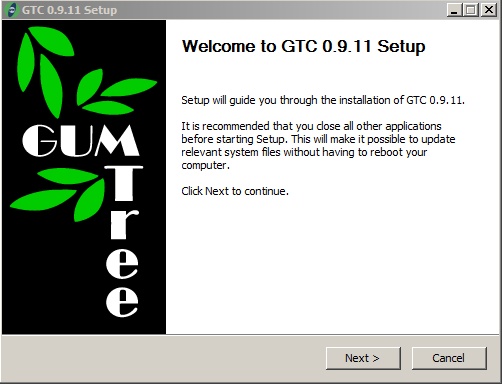
GUM Tree Calculator (GTC)
The GUM Tree Calculator (GTC) is a data processing tool with full support for uncertainty calculations involving real and complex quantities. GTC is a stand-alone executable for Windows. It can handle instructions typed at the command prompt or evaluate text files containing instructions. It is closely integrated with the Windows Explorer for ease of use and does not depend on any other software. GTC can be used on small problems, or as a sophisticated data processing tool for more demanding tasks. Instructions use the Python programming language. An integrated development environment, with syntax highlighting and on-line help, is distributed with the calculator.
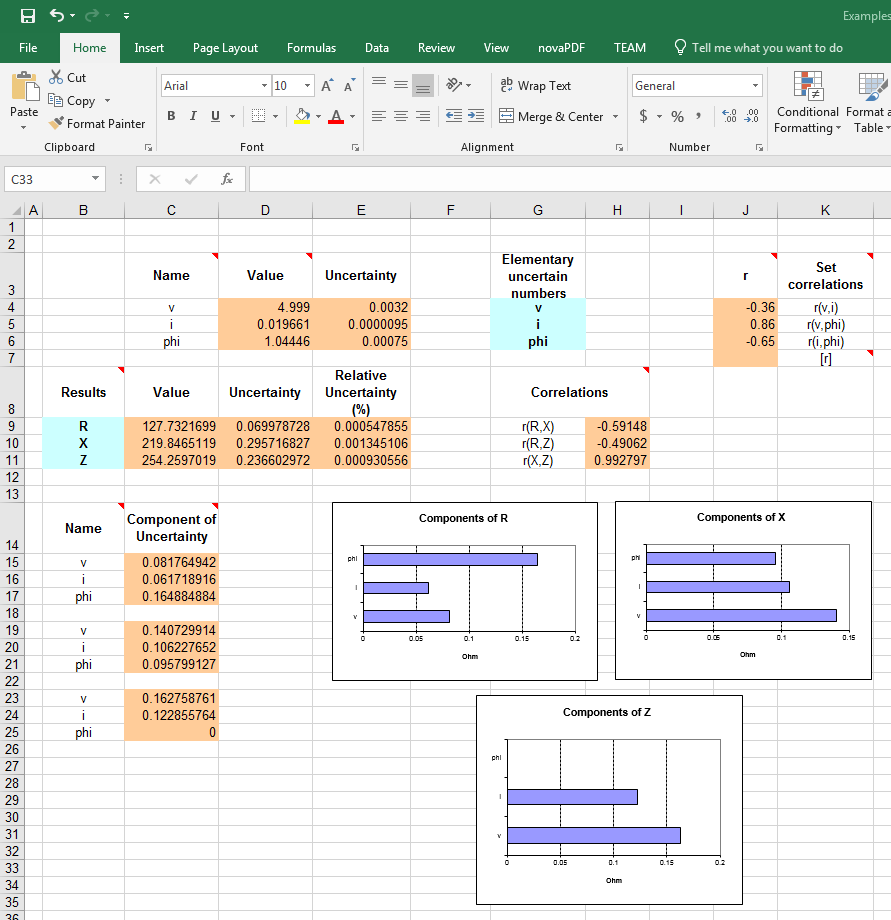
Excel add-in for Uncertainty Calculation (SGUM)
An Excel add-in available for real-valued quantities is available called SGUM. SGUM provides a suite of worksheet functions that can be used to manipulate uncertain numbers referenced to Excel cells. Documentation and examples are provided. Important note about Office 2007 and 2010: The SGUM add-in was developed before the release of Office 2007. We believe that spreadsheets written with earlier Excel versions still execute correctly when opened with Excel 2007 and 2010. However, SGUM will not work properly if worksheets exceed the size limits imposed by earlier Excel versions, or use features not supported in earlier versions
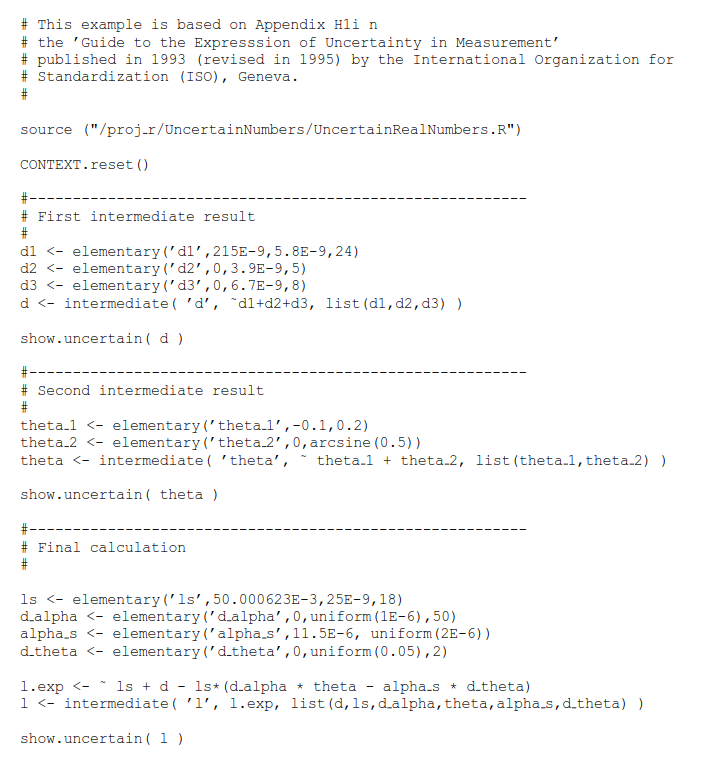
R Library
An implementation of the GUM Tree method has been developed in the R data analysis language using uncertain numbers for real-valued problems.
